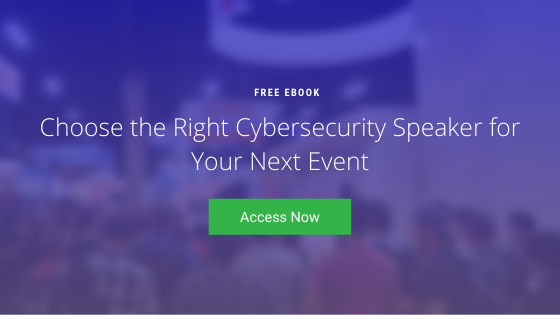As an event planner looking to host a virtual conference, you want to hire engaging talent to entertain your digital audience.
Virtual conferences are growing in popularity, often recognized for being just as impactful as in-person events. But these digital stages need the right content, context, and— of course— speakers to be successful.
Unfortunately, some event planners make the mistake of cutting corners when it comes to planning virtual conferences. But going virtual shouldn’t mean you offer a lower-quality event; in fact, a virtual event could provide a more diverse and interesting experience than ever before.
Here are six tips for booking speakers to host remarkable virtual conferences:
1. Don’t go for a cheaper speaker because your event is virtual.
“It’s just a digital conference,” you may think, “no need to go crazy.” But whether you’re having a digital conference and charging admission or having an internal training or team building event virtually, your attendees will take the day just as seriously as they would in person (though they might be in their slippers). A tacky presentation or bad speaker will flop just as noticeably as one on stage— and reflect just as poorly on you and your company as conference hosts.
Ensure your digital event gets the attention it deserves by investing the same budget you would for in-person talent. “You get what you pay for” logic still stands. If anything, you may end up paying a little more for a digitally-savvy, versatile speaker: one who knows the right techniques for connecting and engaging with your audience through a screen.
2. Don’t assume an in-person speaker can seamlessly switch to a digital experience.
This is one of the biggest mistakes an event planner can make: assuming all speakers are created equal. There are entirely different hurdles a digital speaker must jump over that differ from the challenges facing an in-person presenter: from successfully navigating your hosting platform to engaging in attendee chat features and integrating special effects.
To screen the best talent for your digital stage, connect with them personally. Ask to see their previous on-camera experience— not just live audience experience— and watch the videos all the way through. Then, inquire if they’d be willing to do a mock run-through to see the presentation for yourself.
3. Start vetting digital candidates through a speakers bureau.
There are great resources to help event planners find speakers, but in our experience, a speakers bureau like The National Speakers Bureau is the best place to start. You can explore speakers by popular topics, filtering speakers by cyber security, motivational, business, etc.
From there, you can find the profile of each speaker, which acts as a digital portfolio and lists their speaker fee and bio. Here you can also watch videos, read reviews, and begin to imagine how this speaker may fit into your event. Most importantly, you can see if they offer virtual experiences beyond the stage and have deep on-screen or remote experience.
But don’t limit yourself to just one domain. Here’s a list of excellent resources to get you started on your search:
- Big Speak
- Thinking Heads
- Harry Walker
- London Speaker Bureau
- National Speaker Bureau
- Leading Authorities
- Keppler Speakers
- Washington Speakers Bureau
- APB Speakers
- Aurum Speakers Bureau
4. Look for a good storyteller with unique perspectives.
With a new barrier between your audience and the presenter (the screen), it’s crucial that your virtual speaker captures your audience’s attention in a unique way. Those tuning in remotely are less inclined to stay on the broadcast if they aren’t finding it valuable— feeling less guilty closing a link than leaving a live speaker and audience.
When screening your virtual speaker, see if they can tell a compelling story. Do they paint a colorful narrative to help their audience understand, using realistic scenarios? You want your audience to be able to relate and empathize with the speaker’s examples.
What do they bring to the table that is uniquely theirs? Make sure the presenter doesn’t just rehash information you’ve heard time-and-time again, or that isn’t helpful for your intended audience.
5. Make your conference a premium experience.
When marketing your digital event, be sure to position the virtual gathering as professionally as possible. Instead of promoting a “free webinar” that anyone could attend, add prestige to the attendance. Make it a paid event to emphasize the same value as attending a physical conference or summit— and be sure your speaker can deliver that valuable experience your audience is paying for.
This means you have to think about everything that goes into creating a high-quality speech. For instance, you may choose to use an HD camera to capture the speaker, instead of a lower-res webcam. It may also mean staging the speaker on a professional background versus their home office. Create an experience that feels just as polished and impressive as a corporate event.
6. Don’t neglect the power of exclusivity.
Everyone wants to feel special— like they’re valued and not a meaningless fish in the sea. Don’t underestimate the value of narrowing your audience down to a select few. Consider honoring your invitees by keeping attendance exclusive, and sharing how they’ve excitedly made the cut!
This may mean only inviting guests who would find the content super relevant and positioning the invite as if this talk was made just for them. This may lead to more involved guests and advocates who later brag about their special experience— sparking other’s interest in your brand or cause.
Look No Further for your Cyber Security Speaker
If you’re on the hunt for a cyber security keynote for your virtual event, Kevin Mitnick is your guy.
Unlike other speakers in this industry, Kevin is an active remote speaker and the face of the world’s most successful virtual cybersecurity training program, KnowBe4. He regularly adapts his on-stage experiential hacking demonstrations to a remote audience for webinars and virtual conferences.



